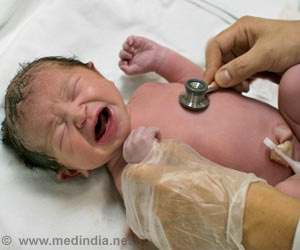
As per the bulletin, Odisha’s IMR now stands at 36/1000 live birth. The IMR, which is widely accepted as a crude indicator of the overall health scenario of a country or a region, is defined as the infant deaths (less than one year) per 1,000 live births in a given time period and for a given region.
Health department officials said it was achieved due to major child health interventions taken by the Odisha government.
The state has 94 first referral units to provide emergency care for delivery and newborn care facilities, of which 80 are providing cesarean section services.
Mother and child health wings are constructed at institutions with high delivery load for providing comprehensive healthcare services under one roof while another 47 maternal & child health complexes (with 125 to 30 beds) have been made functional. Construction at another 19 such complexes is under progress, the officials said.
The state has engaged 624 ambulances for free transportation services to pregnant women and infants. A total of 48,394 ASHAs are in place in the state to facilitate and promote health care service delivery for new born and childcare at rural & urban community level, they said.
Similarly, 44 special newborn care units and 42 newborn stabilization units are operational in Odisha for preventing mortality and brain damage immediately after birth, while 530 newborn care corners are functioning at delivery points.
“Routine immunization strengthened, whereas vitamin K is administered to each newborn at birth, antenatal corticosteroids is administered to all pregnant women with preterm labor for reduction of neonatal mortality due to respiratory distress syndrome in preterm newborns.”
READ RELATED: Swiss man, 20, was left in intensive care after suffering rare lung injury from masturbating
Further, Pediatric Hybrid ICUs are being established at district headquarters hospital (DHH)-level in 29 districts while in three districts, it will be tagged to the nearest district for treatment of severely ill children and for step-down care, officials asserted.
There are four Intensive Care Units (PICU) functioning in the state for intensive care of severely ill children. The state is organizing intensified Diarrhea control campaigns every year for improving awareness & management of childhood Diarrhea.
The state has set up 67 Nutritional Rehabilitation Centers (NRCs) for management of severely acute malnourished children, all ASHAs have been trained for providing counselling to caregivers on home based care of young children.
For accelerated reduction of IMR and MMR (Maternal Mortality Ratio) in the state, a state specific scheme – SAMMPurNA has been implemented in the state since 2015-16.
Major interventions under the program include identification, referral and treatment or management of high-risk pregnant women & children, provisioning of mother and baby kit, reimbursement of transport cost of Rs 1,000 for institutional delivery of pregnant women in notified difficult villages, establishment of High Dependency Units (HDU) & Pediatric Intensive Care Units (PICUs), officials added.
Source: IANS
Source:







